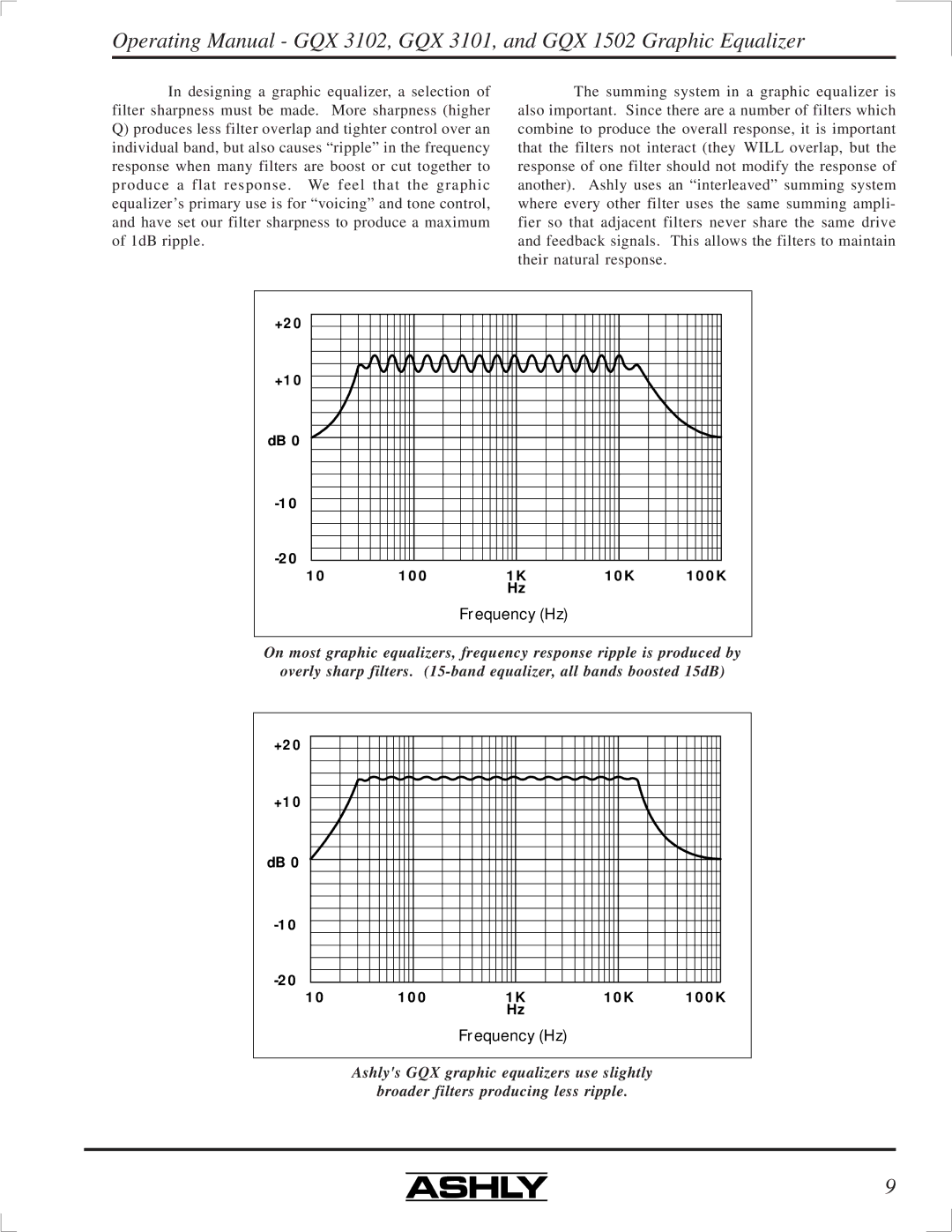
Operating Manual - GQX 3102, GQX 3101, and GQX 1502 Graphic Equalizer
In designing a graphic equalizer, a selection of filter sharpness must be made. More sharpness (higher
Q)produces less filter overlap and tighter control over an individual band, but also causes “ripple” in the frequency response when many filters are boost or cut together to produce a flat response. We feel that the graphic equalizer’s primary use is for “voicing” and tone control, and have set our filter sharpness to produce a maximum of 1dB ripple.
The summing system in a graphic equalizer is also important. Since there are a number of filters which combine to produce the overall response, it is important that the filters not interact (they WILL overlap, but the response of one filter should not modify the response of another). Ashly uses an “interleaved” summing system where every other filter uses the same summing ampli- fier so that adjacent filters never share the same drive and feedback signals. This allows the filters to maintain their natural response.
+20
+10
dB 0
10 | 100 | 1K | 10K | 100K |
Hz
Frequency (Hz)
On most graphic equalizers, frequency response ripple is produced by
overly sharp filters.
+20
+10
dB 0
10 | 100 | 1K | 10K | 100K |
Hz
Frequency (Hz)
Ashly's GQX graphic equalizers use slightly
broader filters producing less ripple.
9
